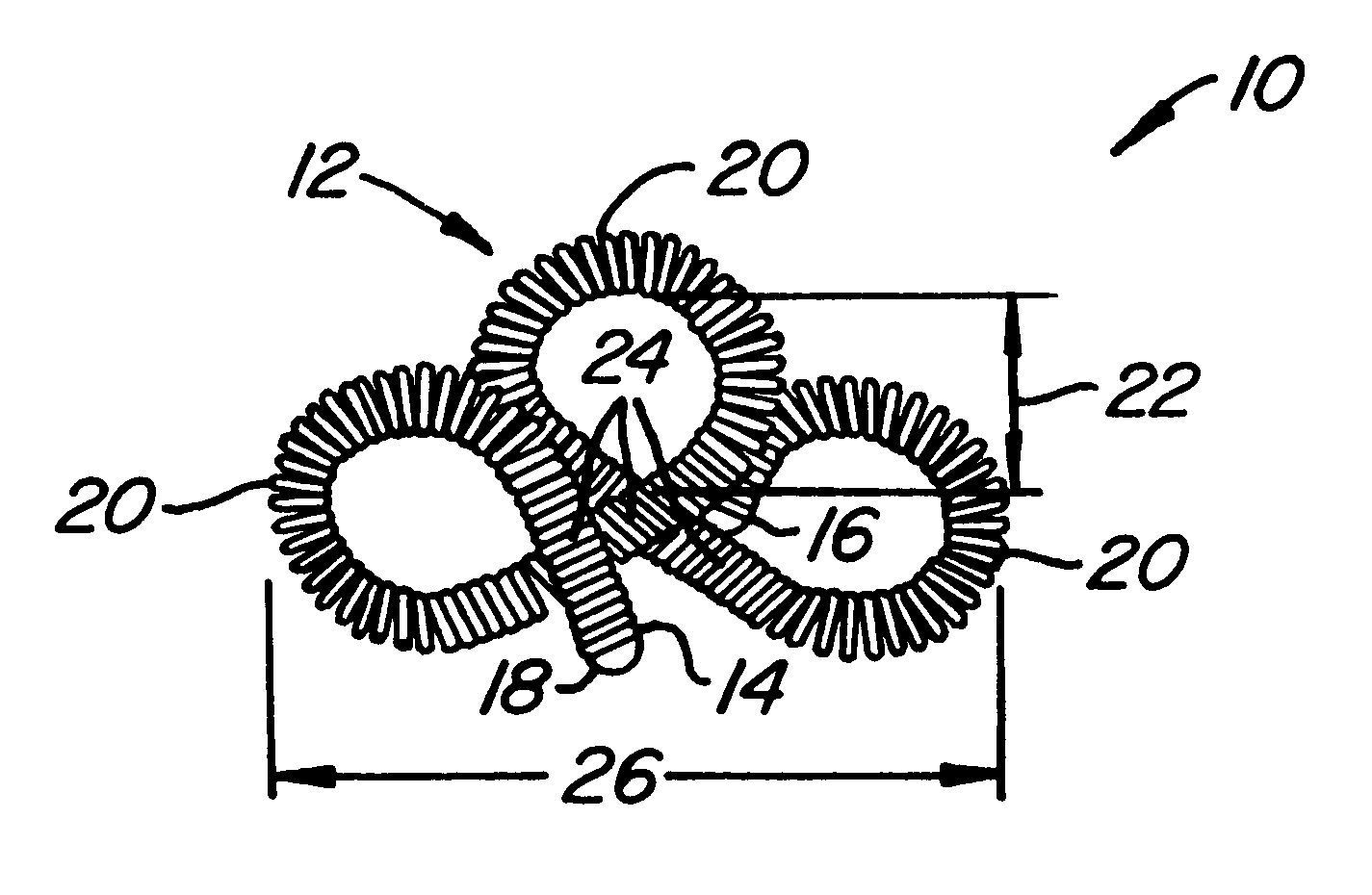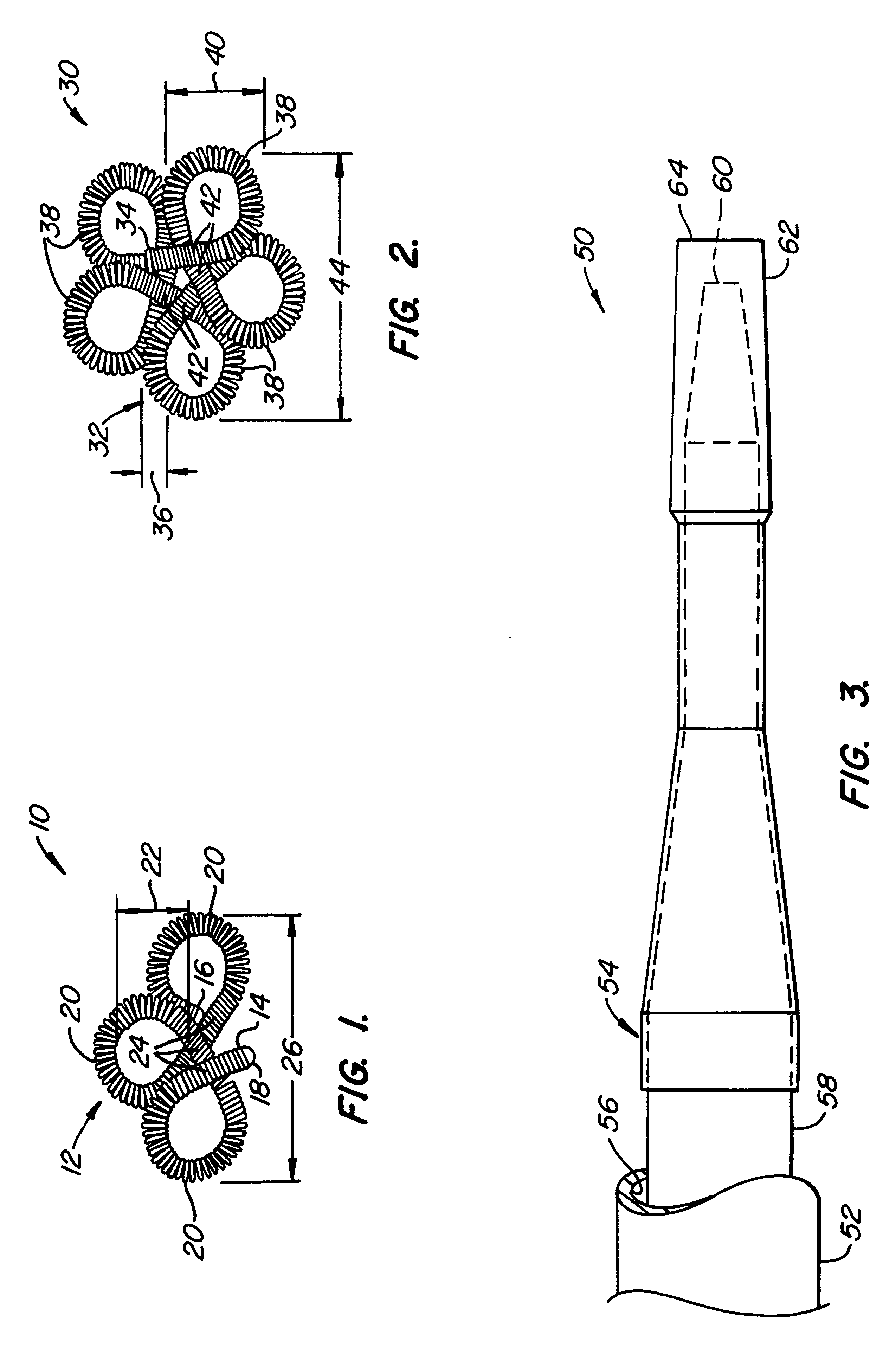Contraceptive transcervical fallopian tube occlusion devices and their delivery
a technology of transcervical fallopian tube and contraception, which is applied in the field of contraception, can solve the problems of large variation in the actual shape and dimensions of the fallopian tube, less readily restrained devices formed from plastically deformable materials, and inability to provide reliable anchoring for pre-formed deformable intrafallopian devices
- Summary
- Abstract
- Description
- Claims
- Application Information
AI Technical Summary
Benefits of technology
Problems solved by technology
Method used
Image
Examples
first embodiment
Referring now to FIG. 1, the present contraceptive intrafallopian device 10 is formed from a resilient primary coil 12. Primary coil 12 is most easily originally formed as a straight cylindrical coil or spring, preferably having an outer diameter in the range from 0.2 mm to 5 mm, and having a length in the range from 20 mm to 150 mm. Ideally, primary coil 12 has an outer diameter in the range from 0.4 mm to 2 mm and a length in the range from 30 mm to 70 mm. The straight primary coil may then be bent into a variety of secondary shapes.
The primary coil 12 of intrafallopian device 10 includes a proximal end 14 and a distal end 16. Between these ends, three loops 20 are formed, each having an inner diameter 22. Located between loops 20 are straight sections 24, which increase the overall cross-section of the intrafallopian device to an overall width 26. Preferably, inner diameter 22 is in the range from 2 mm to 10 mm, while overall width 26 is at least 6 mm, ideally being in the range ...
embodiment 30
Referring now to FIG. 2, an alternative embodiment of the present contraceptive intrafallopian device 30 includes additional loops to ensure anchoring of the device within the fallopian tube. Alternative embodiment 30 is formed from an elongate primary coil 32 having a proximal end 34 and a distal end (not shown). Elongate primary coil 32 has an outer diameter 36 which is smaller than the isthmus of the fallopian tube, allowing the straightened intrafallopian device to be inserted easily. Elongate primary coil 32 has been bent to form a secondary shape including a larger number of loops 38 than the embodiment of FIG. 1. Loops 38 have an outer diameter 40 which is larger than the inner diameter of the fallopian tube, preventing loops 38 from assuming their relaxed shape. Loops 38 are again separated by straight sections 42 of elongate primary coil 32, increasing the overall intrafallopian device diameter 44.
In both embodiments of the present intrafallopian device 10, 30, at least one...
PUM
 Login to View More
Login to View More Abstract
Description
Claims
Application Information
 Login to View More
Login to View More - R&D
- Intellectual Property
- Life Sciences
- Materials
- Tech Scout
- Unparalleled Data Quality
- Higher Quality Content
- 60% Fewer Hallucinations
Browse by: Latest US Patents, China's latest patents, Technical Efficacy Thesaurus, Application Domain, Technology Topic, Popular Technical Reports.
© 2025 PatSnap. All rights reserved.Legal|Privacy policy|Modern Slavery Act Transparency Statement|Sitemap|About US| Contact US: help@patsnap.com



